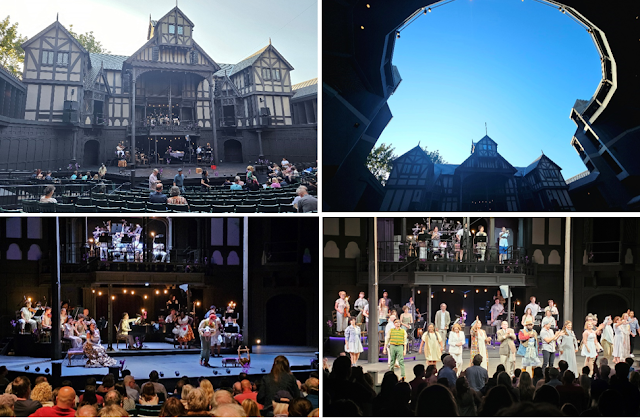 |
| Lovely views from Port Townsend, WA. |
Rog assures me that I’m under no obligation to blog every
time we move the rig, but, geesh, wouldn’t you miss us? Lol. So, here’s a post
to catch you up on our activities and document our quick trip over to Yakima,
WA for the Fresh Hop Festival. (Besides, as our friend Bob reminded me, if you
don’t post, how will you remember anything. Dang, he has a point.)
So let’s backtrack to August for our annual girls only
camping trip. My friend, Elaine, does a magnificent job of event planning and herding
cats. This year we spent three nights at Fort Flagner, near Port Townsend, WA. The
state park rents out the officers’ quarters and other buildings as overnight accommodations. We had an
excellent time exploring the historic fort and roaming the beach where a bald
eagle was kind enough to pose for us. One of the park residents took note of
our interest and brought by an eagle egg she had found. How cool is that!
 |
| Fun times at Fort Flagner State Park and Port Townsend. |
 |
| Such a majestic bird. I'd never seen an eagle egg before! |
 |
| Carole and Diane take aim! |
We spent a perfect sunny summer day in Port Townsend, taking
in the sights and, of course, visiting the shops and sampling both adult
beverages and the local ice cream shops. 😊
 |
| Florene checks out the whale exhibit on the pier. |
 |
| Now there's an unruly bunch. Lol. |
In early September, I did a quick trip to Sacramento to
visit Rian and… drum roll please…meet my adorable new grandpuppy, Gwendolyn. Rian
and I had fun hitting estate sales and an antique fair. But, what I
liked most was curling up with Gwen on the couch or watching her bound around the backyard flinging her toys in the air and then pouncing on them,
then zooming around to do it again. Pure puppy joy is a delight to behold.
 |
| My grandpuppy is the cutest! |
 |
| Two gorgeous girls! |
 |
| Wait! Is that a puppy or a baby seal? 😂 |
Now I want to give some serious kudos to my brilliant
daughters, family, and friends for pulling off a fast one. My brother Tom and his wife, Kim, came for a
visit on September 24th from Virginia. Since we don’t get to see them often, I also asked the
girls if they were able to join us. Randi flew up from Texas, but Rian said she
couldn’t get the time off work. The law firm she works for has the crappiest
PTO policy I’ve ever seen. Sigh. I was bummed but understood.
 |
| You know you are an honored guest when Riley shares the couch. Lol. |
On Saturday, 9/27, we were scheduled to descend on my brother Tim and his partner Mike's lovely glamping spot at Lake Connor Park. We
were snatching a quick breakfast and coffee when I turned around to see an
extra body in the kitchen boldly grabbing a coffee mug out of the cabinet. I did a
double, then triple take, and had a WTF moment. Then Rian turned around.
Surprise! I was so happy she could join us. She does love pulling one over on
me.
We had an excellent time at Tim’s and took lots of family
pictures, since it’s rare to have all three of us siblings together, and a
special treat to have both the girls home too. We ate too much and shared stories
and told lies. A fun time was had by all.
 |
| Not lying about the Glamping! We even had a personal chef - thanks Mike! |
 |
| Where are Riley, Raney, Gwen, Flint and Cleo? Humph!😁 |
 |
| All the usual suspects. |
 |
| This must be the telling stories and lies part. Lol. |
On Sunday, Rian said she was meeting a friend for lunch while
we planned to meet Bob and Carole at one of our favorite places, the Brewmaster
Taproom, for an early happy hour. I blithely strolled, paying no attention, and
was met with SURPRISE! OMG, not only did Rian pull off a surprise visit but she
orchestrated a surprise 65th birthday party for me! Color me floored
– the picture says it all. Lol.
 |
| Aaaaaaaah! |
Apparently, she had started planning in July, stealing contacts off my phone when we were working on her deck. She’d originally scheduled it for my birthday (10/10), but when the dates for Tom and Kim’s visit were announced, pivoted to include them. What an amazing feat! Rog said he was a nervous wreck for weeks, worrying he’d accidentally let the cat out of the bag. No cats were left to roam and all I have to say is my entire family and friend group are far sneakier than I ever imagined. (I’ll be watching you all more closely from now on!) It was truly wonderful, spending time with folks I rarely get to see. And check out the amazing birthday banner that Randi made! It all made getting officially old totally worth it!
 |
| What a special surprise! |
 |
Friends, Family and Fun.
Takes the sting out of being officially old. Lol. |
On Monday, we loaded up the family to go see one of the Thomas
Dambo trolls. Dambo, a Danish environmental artist, has created more than
150 troll sculptures located in over a dozen countries. The NW Troll
project, themed “Way of the Bird King,” includes six sites in the Pacific
Northwest. I’ve been wanting to go troll hunting for ages and was thrilled to
finally make it out to Issaquah to visit Jakob Two Trees. The sculpture was
much larger and more complex than I’d imagined and beautifully done! If you
have a chance to see any of them, don’t hesitate. Now I really want to start
hunting down the others in the area.
 |
| Hello Jakob Two Trees. |
.jpg) |
| Successful troll hunters. |
 |
| Jakob is waiting to meet you too! |
Sadly, our family time came too quickly to an end. Rian
was only able to stay for the weekend, and it wasn’t long before Tom and Kim,
and then Randi were on their way home. It felt like we’d barely dropped them off
at the airport before we were loading the RV for a trip to Yakima for the
annual Fresh Hop Festival, which was held on Saturday, October 4th.
The Yakima Valley accounts for over 77% of the total
United States hop crop. Given those stats, hops are a really big deal! Rog loves
craft beer and looks forward to fresh hop season every year. We’d never
attended the Yakima festival and were excited to check it out with Bob and
Carole. The festival was held this year at the Yakima fairgrounds, so we were
able to park our rigs at the fairground’s RV park just a short walk from the
festival. Excellent idea!
We opted for general admission, so promptly at 5pm we headed
over to collect our wristbands and beer tokens. I’m not an IPA fan, so the
appeal of fresh hops is lost on me. (Sacrilege, I know. Sorry.) I was a little worried
I wouldn’t find anything I liked, but happily those fears were totally
unfounded. With 51 brewers present there was something for everyone! Along with
a vast array of IPAs, pilsners, ales, etc. there were a few ciders and sours
(my favorites!) and even some wine on offer. We would definitely go again and
probably opt for VIP tickets which get you early access, additional tokens, and
dinner. Yay!
 |
Rog sampling the wares.
Love the nod to the Etsy Witch. Go Mariners! |
On Sunday, 10/5, we moved from the fairgrounds to Big
Pines, A BLM campground on the Yakima River. I think this was our third stay at
Big Pines, but Bob and Carole had never been there, and we were excited to
float the river with them. We had a leisurely day in camp on Sunday and then
waited until early afternoon on Monday, timing our float for the warmest part
of the day.
 |
| Big Pines campground - just a short stroll from the rig to the river. |
We’ve done this float twice before, (once with Riley!), and
loved it. We put in at Umtanum and take out about seven miles downriver at our campground. Usually there are plenty of folks floating the river in everything inner
tubes to inflatable unicorns. But we’d never gone this late in the season, and
it turned out the river was pretty low, making it a bit more of an adventure
than we anticipated. We saw several people fishing, this stretch of the Yakima
is well known for its trophy trout (all catch and release), but no casual
rafters. Now we know why. Lol.
The scenery really is lovely and we saw several blue
herons, a deer, and I spotted tons of smaller trout and one huge granddaddy. Then
things got a little sketchy as we hit several very shallow areas where if you
weren’t careful (or lucky) you’d drag butt or end up totally high and dry. We
drug bottom and Bob and Carole got stuck a few times. Bob had to get out and
try to pull their boat over the rocks, while we tried to paddle upriver (not
recommended!) to offer assistance. They ended up with several inches of water
in their boat and Bob’s seat malfunctioned which made his life interesting, but
they got going again without incident. Then one of our pontoons got noticeably squishy
and we had to pull over and pump more air into it. Odd, but then it happened
again, and it was clear we had a leak. Ugh. It was still a fun float, but maybe
we’ll double-check the water levels before doing it again. Lol.
 |
| Bob & Carole near the put in spot at the Umtanum Bridge. |
 |
| Can't complain about the Yakima River scenery! |
 |
| The locals are charming too. |
Bob and Carole had family commitments, so they headed
back home on Tuesday morning. Rog did some fishing and we just enjoyed hanging
out with the puppers until Thursday, 10/9, when we also packed it up to head
home. It’s amazing how just a few hours’ travel to the other side of the
mountains can make it feel like you’re in a different state. Sunshine and high desert
vs. drizzle and evergreens, yep, we can do that again. 😊
 |
| Rog doing the fishy thing. :) |
 |
| I think he looks like a character from "A River Runs Through It". |
This was probably our last RV trip for the year, but planning
for our “big trip” in 2026 is progressing nicely. So far, we have a tentative route
and about 45 stops mapped out from home to the Escapade RV rally in Fryeburg,
Maine. The return portion needs some work, but we may leave some of that open and
adopt Rog’s go with the flow travel vibe. We still need to make reservations
for the national parks and most of the east coast sites since there’s not much
in the way of boondocking there. We’re excited for another long trip and who
knows what (mis)adventures await. I’m looking forward to sharing them with you!


















.jpg)































